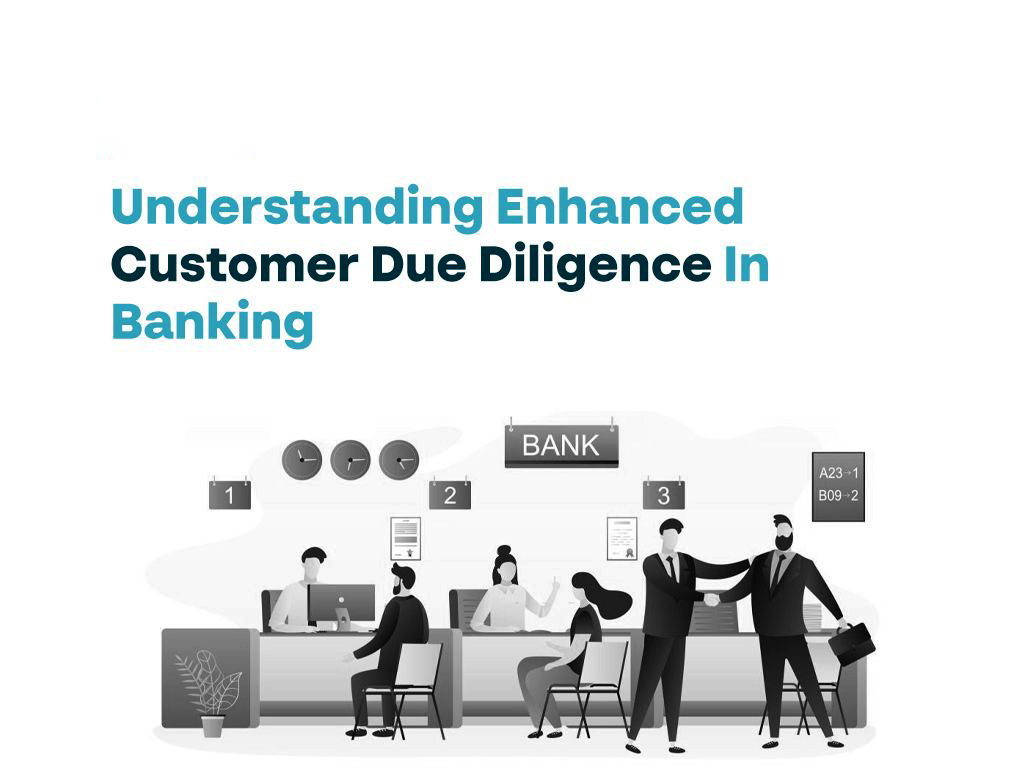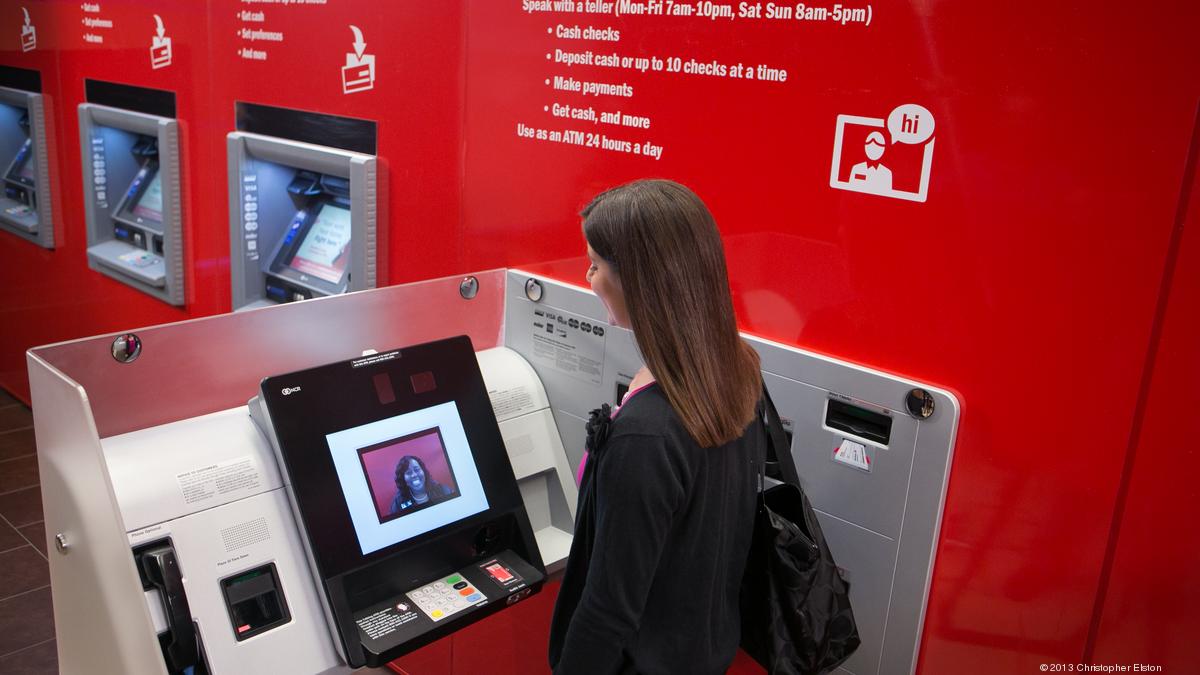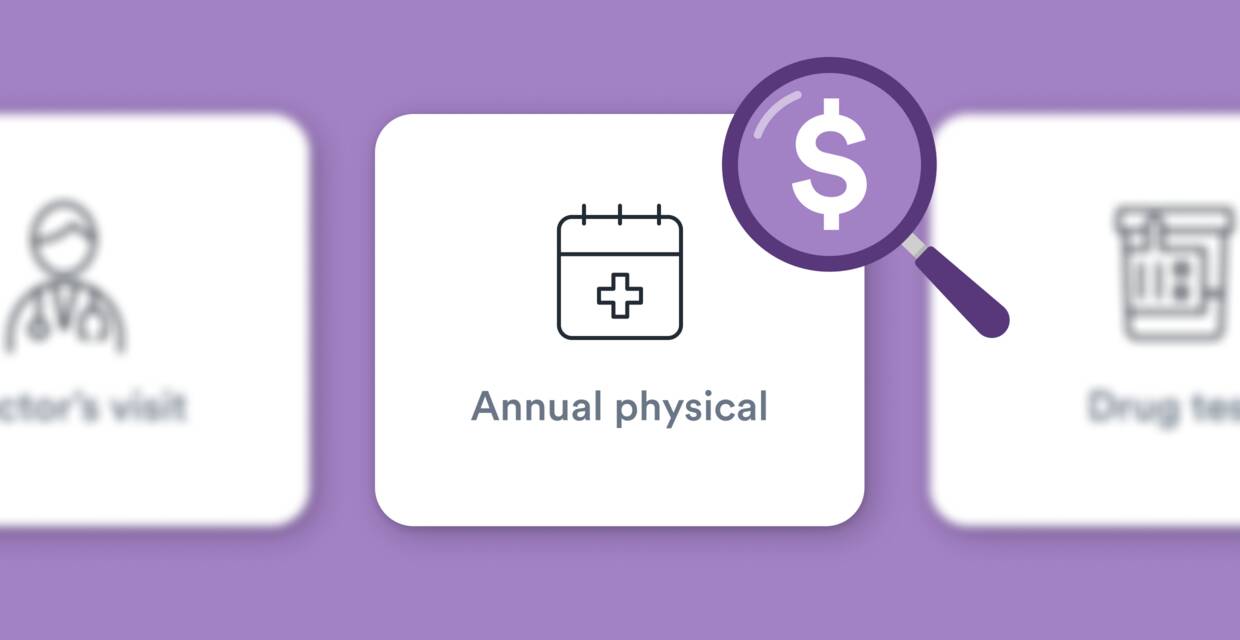

Finance
What Is ICS In Banking
Published: October 11, 2023
Learn about the importance of ICS (Internal Control System) in banking and how it impacts the overall finance operations. Enhance your understanding of finance with our comprehensive guide.
(Many of the links in this article redirect to a specific reviewed product. Your purchase of these products through affiliate links helps to generate commission for LiveWell, at no extra cost. Learn more)
Table of Contents
Introduction
With the advent of digital technologies and the increasing reliance on digital systems, the banking industry has witnessed a transformational shift in its operations. While this digital revolution has brought numerous benefits, it has also exposed banks to new challenges, particularly in terms of security and risk management. To address these challenges, banks have implemented various measures, one of which is the Information and Cybersecurity (ICS) framework.
The ICS framework is designed to protect a bank’s information and digital infrastructure from threats, including cyber-attacks, data breaches, and financial fraud. It encompasses a range of strategies, technologies, and processes that banks employ to ensure the confidentiality, integrity, and availability of their systems and data.
The importance of ICS in banking cannot be overstated. As banks store and process vast amounts of sensitive customer information, it is crucial to have robust security measures in place to safeguard against unauthorized access and potential breaches. A successful cyber-attack not only poses a threat to a bank’s reputation but also has the potential to result in significant financial losses and harm its customers.
Furthermore, financial institutions are subject to strict regulatory requirements and industry standards set by government bodies and regulatory agencies. These guidelines emphasize the need for banks to implement effective cybersecurity measures to protect themselves and their customers from digital threats.
This article explores the importance of ICS in banking, the key components of an ICS framework, the risk assessment and mitigation processes involved, cybersecurity measures commonly employed, compliance and regulatory frameworks, implementation challenges, and the benefits of implementing ICS in the banking industry.
Definition of ICS
Information and Cybersecurity (ICS) in the context of the banking industry refers to the strategies, technologies, and processes put in place to protect a bank’s information systems, networks, and data from unauthorized access, cyber threats, and financial fraud. It encompasses a comprehensive framework that aims to ensure the confidentiality, integrity, and availability of a bank’s digital infrastructure.
ICS involves the implementation of various security measures, including risk assessment, incident response, access controls, data encryption, network monitoring, and employee training. It is a holistic approach that combines both technological and procedural elements to mitigate risks and safeguard the bank’s information assets.
The ICS framework typically consists of several layers of security controls, each serving a specific purpose. These include:
- Perimeter security: This layer focuses on protecting the bank’s network from external threats through firewalls, intrusion detection systems, and antivirus software.
- Access controls: This layer deals with managing user access to the bank’s systems and resources. It includes authentication mechanisms, role-based access controls, and privileged access management.
- Network security: This layer involves securing the bank’s internal network to prevent unauthorized access and data breaches. It includes network segmentation, secure configurations, and traffic monitoring.
- Data protection: This layer focuses on protecting sensitive data by employing encryption techniques, data classification, and data loss prevention measures.
- Incident response and recovery: This layer involves establishing processes and procedures to detect, respond to, and recover from security incidents. It includes incident management, logging, and backup and restore capabilities.
The ICS framework is not a one-time implementation but an ongoing process that requires continuous monitoring, assessment, and improvement. It should be aligned with the bank’s risk appetite and regulatory requirements to ensure the bank’s resilience against evolving threats.
Importance of ICS in Banking
The Information and Cybersecurity (ICS) framework plays a critical role in the banking industry due to the following reasons:
Protection of Sensitive Customer Information: Banks gather and store a vast amount of sensitive customer data, including personal and financial details. This information is highly valuable to cybercriminals who seek to exploit it for financial gain. Implementing an effective ICS framework ensures the confidentiality and integrity of this data, protecting customers from potential financial fraud and identity theft.
Safeguarding Against Cyber Threats: The banking industry is a prime target for cyber-attacks due to its financial assets and the potential impact such attacks can have on the economy. ICS helps banks defend against various cyber threats, including malware, phishing attempts, ransomware, and Distributed Denial of Service (DDoS) attacks. By having robust security measures in place, banks can decrease the likelihood of successful attacks and minimize the potential damage.
Mitigating Financial Losses: Cyber-attacks not only result in financial losses for banks but can also disrupt their operations, leading to significant downtime and monetary losses. ICS helps banks identify vulnerabilities, assess risks, and implement appropriate controls to minimize the financial impact of potential security breaches. This proactive approach enables banks to protect their assets and maintain the continuity of their business operations.
Ensuring Regulatory Compliance: The banking industry is subject to extensive regulations and compliance requirements imposed by government bodies and regulatory agencies. Implementing an ICS framework helps banks comply with these regulations, such as the Gramm-Leach-Bliley Act (GLBA) and the Payment Card Industry Data Security Standard (PCI DSS). Adhering to these standards not only avoids legal implications but also demonstrates a bank’s commitment to protecting its customers’ interests.
Preserving Brand Reputation: A successful cyber-attack can severely damage a bank’s reputation, eroding customer trust and loyalty. With the rise of social media and instant communication, news of a security breach can spread rapidly, negatively impacting the bank’s brand image. By prioritizing ICS, banks can assure their customers that their information is secure, reinforcing trust and maintaining a positive reputation in the market.
Staying Ahead of Evolving Threats: The cybersecurity landscape is constantly evolving, with new threats and attack vectors emerging regularly. An effective ICS framework enables banks to stay ahead of these threats by continuously monitoring and updating their security controls. This proactive approach ensures that banks can adapt to new vulnerabilities and protect themselves and their customers against emerging threats.
In summary, the implementation of an Information and Cybersecurity (ICS) framework is of utmost importance in the banking industry. It not only protects sensitive customer information but also safeguards banks from cyber threats, minimizes financial losses, ensures regulatory compliance, preserves brand reputation, and keeps banks prepared for evolving cybersecurity challenges. By prioritizing ICS, banks can maintain a secure and resilient digital environment, instilling confidence in their customers and stakeholders.
Key Components of ICS in Banking
The Information and Cybersecurity (ICS) framework in banking comprises several key components that work together to ensure the security and integrity of a bank’s information and digital infrastructure. These components include:
- Risk Assessment: Conducting regular risk assessments is crucial to identify and evaluate potential vulnerabilities and threats. This involves assessing the impact and likelihood of various risks, including cyber-attacks, data breaches, and insider threats. The findings of the risk assessment inform the development of appropriate security controls and measures.
- Access Controls: Access controls involve implementing measures to manage and control user access to systems and resources. This ensures that only authorized individuals can access sensitive data and perform specific functions. Access controls include mechanisms such as strong passwords, multi-factor authentication, role-based access controls (RBAC), and least privilege principles.
- Network Security: Network security focuses on securing the bank’s internal network and external connections. This includes implementing firewalls, intrusion prevention systems (IPS), virtual private networks (VPNs), and secure configurations for network devices. Network monitoring tools and techniques are also used to detect and respond to any suspicious activities or unauthorized access attempts.
- Endpoint Security: Endpoint security involves securing individual devices, such as laptops, desktops, and mobile devices, that connect to the bank’s network. This is achieved through the use of antivirus software, host-based intrusion prevention systems (HIPS), and data encryption. Regular patch management and device configuration management are also critical to maintain the security of endpoints.
- Data Protection: Data protection measures focus on safeguarding sensitive data from unauthorized access and disclosure. This includes techniques such as data encryption, data loss prevention (DLP), secure data storage, and secure transmission protocols. Data classification and data lifecycle management are implemented to ensure that data is handled and stored appropriately based on its sensitivity.
- Incident Response: A well-defined incident response plan is essential to enable the timely detection, containment, and remediation of security incidents. This involves establishing incident response teams, defining incident roles and responsibilities, and implementing processes for reporting and investigating incidents. Incident response plans also include communication protocols with stakeholders, such as customers, regulators, and law enforcement agencies.
- Employee Training: Employees play a critical role in maintaining the security of a bank’s systems and data. Regular training and awareness programs are conducted to educate employees about security best practices, phishing awareness, social engineering techniques, and the importance of data protection. Employee training helps mitigate the risks associated with human error or negligence in handling sensitive information.
- Third-Party Risk Management: As banks often rely on third-party vendors and service providers, it is essential to assess and manage the security risks associated with these external entities. This involves evaluating the security controls and practices of third-party organizations, enforcing contractual obligations, and regular monitoring of their security posture.
These key components of the ICS framework work together to create a layered and robust security infrastructure within the banking industry. By implementing these components effectively, banks can mitigate the risks associated with cyber threats, protect sensitive data, and ensure the continuity and trustworthiness of their services.
Risk Assessment and Mitigation
Risk assessment and mitigation are crucial components of the Information and Cybersecurity (ICS) framework in banking. They involve identifying potential vulnerabilities and threats, evaluating their potential impact, and implementing appropriate measures to minimize or eliminate those risks.
Risk Assessment: Risk assessment is the process of identifying and analyzing potential risks to a bank’s information and digital infrastructure. This involves conducting a thorough examination of the bank’s systems, networks, applications, and processes to identify vulnerabilities and potential entry points for attackers. The goal is to assess the likelihood and impact of various risks, such as unauthorized access, data breaches, and system failures.
During the risk assessment process, banks typically follow these steps:
- Asset Identification: Identify and classify the assets that need protection, including sensitive data, systems, hardware devices, and software applications.
- Threat Identification: Identify potential threats and attack vectors that could exploit the identified assets. This includes considering both external threats, such as hackers and malware, as well as internal threats, such as insider attacks or unintentional errors.
- Vulnerability Assessment: Evaluate the vulnerabilities inherent in the bank’s systems and infrastructure. This can be done through penetration testing, vulnerability scanning, and reviewing system configurations and access controls.
- Risk Analysis: Analyze the likelihood and potential impact of the identified risks. This involves considering factors such as the probability of occurrence, the potential financial losses, and potential reputational damage to the bank.
- Risk Prioritization: Prioritize the identified risks based on their severity and potential impact. This helps banks allocate resources effectively and focus on addressing the most critical risks first.
Risk Mitigation: Once the risks have been identified and prioritized, banks need to implement appropriate measures to mitigate or eliminate those risks. This involves implementing security controls, processes, and technologies to reduce the likelihood and impact of potential threats.
Some common risk mitigation strategies include:
- Access Controls: Implement strong access controls, such as strong passwords, multi-factor authentication, and role-based access controls, to prevent unauthorized access to systems and data.
- Encryption: Encrypt sensitive data both at rest and in transit to protect it from unauthorized access or exposure.
- Regular Patching and Updates: Keep systems and software up to date with the latest security patches and updates to address any known vulnerabilities.
- Network Segmentation: Segment the network to limit the spread of potential cyber-attacks and protect critical assets from unauthorized access.
- Employee Training: Train employees on security best practices, such as recognizing phishing attempts, practicing good password hygiene, and maintaining awareness of social engineering techniques.
- Incident Response Plan: Develop a well-defined incident response plan to effectively respond to and mitigate the impact of security incidents. This includes defining roles and responsibilities, establishing communication channels, and conducting regular incident drills and simulations.
- Third-Party Risk Management: Implement strict controls and monitoring mechanisms to manage the risks associated with third-party vendors and service providers.
Implementing risk assessment and mitigation processes is vital to ensure that banks have a comprehensive understanding of potential vulnerabilities and threats. By addressing these risks proactively, banks can minimize the likelihood of security incidents, protect sensitive customer data, maintain operational efficiency, and strengthen their overall cybersecurity posture.
Cybersecurity Measures in ICS
Cybersecurity measures are an integral part of the Information and Cybersecurity (ICS) framework in banking. They involve the implementation of various strategies, technologies, and processes to protect a bank’s information systems, digital infrastructure, and sensitive data from cyber threats. Here are some key cybersecurity measures employed in ICS:
- Firewalls: Firewalls act as the first line of defense by monitoring and controlling the incoming and outgoing network traffic. They analyze data packets and determine whether to allow or block communication based on predetermined security rules, thereby protecting against unauthorized access attempts.
- Intrusion Detection and Prevention Systems (IDPS): IDPS monitors the network for malicious activities and potential threats. It detects and alerts administrators about suspicious network traffic patterns, unauthorized access attempts, and known attack signatures. IDPS can also take proactive measures to prevent or mitigate the impact of identified threats.
- Endpoint Protection: Endpoint protection encompasses a range of security measures to secure individual devices, such as laptops, desktops, and mobile devices, that connect to the bank’s network. This includes antivirus software, host-based intrusion detection/prevention systems (HIDS/HIPS), application whitelisting, and device encryption.
- Data Encryption: Data encryption is used to protect sensitive information by converting it into a ciphertext that can only be deciphered with the appropriate encryption key. Encryption is applied to data both at rest (stored on servers or devices) and in transit (during transmission over networks) to prevent unauthorized access or interception.
- Secure Configurations: Secure configurations involve applying hardened and secure settings to system components, devices, and applications. This includes disabling unnecessary services, removing default accounts and passwords, and configuring system settings to follow industry best practices and security guidelines.
- Security Awareness and Training: Employee education and training play a critical role in maintaining a secure environment. Banks conduct regular cybersecurity awareness programs to educate employees about common threats, best practices for password management, safe browsing, and recognizing suspicious emails or links. This empowers employees to be an active line of defense against potential cyber threats.
- Secure Software Development Lifecycle (SDLC): Implementing a secure SDLC involves integrating security practices into the development process of software applications. This includes the identification and mitigation of security vulnerabilities through activities such as secure coding practices, code reviews, and penetration testing, ensuring that applications are developed with security in mind.
- Logging and Monitoring: Logging and monitoring mechanisms are essential for detecting and investigating security incidents. Banks employ security information and event management (SIEM) solutions to collect and analyze logs from various systems and networks, enabling the timely detection of unusual activities, intrusion attempts, or policy violations.
- Incident Response Plan: An incident response plan outlines the actions to be taken in the event of a security incident. It includes a defined communication plan, incident containment procedures, evidence collection, and reporting processes. The plan ensures a structured and coordinated response to minimize the impact of incidents and facilitate recovery.
These cybersecurity measures work in tandem to create a layered defense strategy, enhancing the overall security of a bank’s information and digital infrastructure. By implementing these measures, banks can protect their systems from unauthorized access, detect and respond to potential threats, and safeguard sensitive customer data, ultimately minimizing the risk and impact of cyber-attacks.
Compliance and Regulatory Frameworks
The banking industry operates within a highly regulated environment, and compliance with various regulations and industry standards is crucial for maintaining the trust and confidence of customers and stakeholders. To address these requirements, banks adhere to specific compliance and regulatory frameworks, both at the national and international levels.
Gramm-Leach-Bliley Act (GLBA): The GLBA, enacted in the United States, requires financial institutions to protect the privacy and security of customer information. It mandates that banks develop and implement comprehensive Information Security Programs (ISPs) that include administrative, technical, and physical safeguards to protect customer data from unauthorized access or use.
Payment Card Industry Data Security Standard (PCI DSS): PCI DSS is a global security standard established by major card brands to protect sensitive cardholder data during card transactions. Banks that process, transmit, or store payment card information are required to adhere to PCI DSS and implement a set of security controls to ensure the secure handling of cardholder data.
General Data Protection Regulation (GDPR): The GDPR, applicable to banks operating within the European Union (EU), focuses on the protection of personal data of EU citizens. Banks must ensure compliance with GDPR principles, which include obtaining consent for data processing, implementing appropriate security measures, providing data breach notification, and respecting individuals’ rights with regard to their personal data.
Basel III Accord: The Basel III Accord, issued by the Basel Committee on Banking Supervision, sets forth global regulatory standards for banks’ capital adequacy, liquidity ratios, and risk management practices. Compliance with Basel III ensures that banks maintain sufficient capital reserves to absorb potential losses and manage operational risks effectively.
Financial Action Task Force (FATF) Recommendations: FATF is an international body that sets standards and promotes measures to combat money laundering, terrorist financing, and other financial crimes. Banks are required to implement FATF’s recommendations, such as customer due diligence, transaction monitoring, and reporting of suspicious activities.
Industry-specific regulations: Apart from the above regulations, banks may also be subject to industry-specific regulations. For example, in the United States, the Office of the Comptroller of the Currency (OCC), Federal Deposit Insurance Corporation (FDIC), and Federal Financial Institutions Examination Council (FFIEC) provide guidelines and regulations specific to the banking industry.
Compliance with these frameworks involves implementing various security measures and controls within the ICS framework. Banks must maintain comprehensive security programs, conduct regular risk assessments, develop and enforce policies and procedures, conduct employee training, monitor and audit systems, and establish incident response plans.
Regulatory bodies conduct audits and assessments to ensure banks’ compliance with these frameworks. Non-compliance can lead to severe penalties, reputational damage, and loss of customer trust. Therefore, banks invest significant resources in implementing and maintaining a robust ICS framework to ensure adherence to these compliance and regulatory requirements.
By aligning with these frameworks, banks demonstrate their commitment to maintaining the security and privacy of customer data, enhancing trust and transparency in the financial sector.
Implementation Challenges of ICS in Banking
The implementation of an Information and Cybersecurity (ICS) framework in the banking industry is not without its challenges. Here are some key challenges that banks may encounter during the implementation process:
Complexity and Scale: Banks often have complex and diverse IT infrastructures, consisting of various systems, networks, and applications spread across multiple branches and locations. Implementing an ICS framework across this vast and interconnected landscape can be challenging in terms of scalability and coordination.
Rapidly Evolving Threat Landscape: Cyber threats are constantly evolving, and attackers are becoming increasingly sophisticated in their techniques. Banks need to keep pace with these changes and constantly update their security measures to protect against emerging threats. This requires agility and continuous monitoring and adjustment of security controls.
Budget Constraints: Implementing a robust ICS framework requires significant financial investment, both in terms of technology infrastructure and skilled personnel. Budget constraints can pose challenges for banks, especially smaller institutions that may struggle to allocate sufficient resources to address their cybersecurity needs effectively.
Availability of Skilled Resources: The cybersecurity talent gap is a global challenge, and the banking industry is not immune to this shortage of skilled professionals. Finding, recruiting, and retaining cybersecurity experts with a deep understanding of the banking sector can be a challenge, particularly in the face of stiff competition from other industries.
Legacy Systems and Applications: Many banks rely on legacy systems and applications that may not have been designed with robust security measures in mind. Ensuring the security of these legacy systems and integrating them into the ICS framework can be challenging, requiring careful assessment and implementation of appropriate security controls.
Third-Party Risk Management: Banks often work with third-party vendors and service providers, increasing the complexity of their digital ecosystem. Managing the cybersecurity risks associated with these external entities, ensuring their compliance with security standards, and establishing effective security controls requires proactive oversight and risk management processes.
User Awareness and Acceptance: User awareness and acceptance of security policies and practices play a crucial role in the effectiveness of an ICS framework. Banks may face challenges in gaining user buy-in, ensuring adherence to security policies, and fostering a cybersecurity-aware culture throughout the organization. Continuous education and training are keys to address this challenge effectively.
Regulatory Compliance Pressure: Banks face stringent regulatory requirements, and compliance with various industry-specific regulations adds complexities to their ICS framework implementation. The evolving nature of regulatory expectations, along with the increased focus on data privacy and protection, places additional pressures on banks to adapt their security measures and ensure compliance.
Overcoming these challenges requires a strategic and proactive approach. Banks should prioritize cybersecurity, invest in technology and skilled resources, collaborate with experts and industry peers, and ensure a commitment to ongoing training and awareness. By addressing these challenges effectively, banks can enhance their cybersecurity posture, protect customer data, and maintain the trust of their stakeholders.
Benefits of ICS in Banking
The implementation of an Information and Cybersecurity (ICS) framework in the banking industry brings forth numerous benefits. Here are some key advantages that banks can experience through the adoption of an effective ICS framework:
Enhanced Security: The primary benefit of ICS is the improved security of a bank’s information systems and data. By implementing robust security controls, conducting regular risk assessments, and staying vigilant against emerging threats, banks can minimize the risk of unauthorized access, data breaches, and cyber-attacks. Enhanced security measures protect sensitive customer information, maintain operational continuity, and safeguard the reputation of the bank.
Regulatory Compliance: Compliance with regulatory requirements is a critical aspect of the banking industry. An ICS framework ensures that banks meet the mandated security and data protection guidelines set by government regulatory bodies and industry standards. By adhering to these regulations, banks avoid legal complications, mitigate the risks of financial penalties, and demonstrate their commitment to customer privacy and data protection.
Improved Customer Trust: The security of customer information is crucial in banking. By implementing robust security measures and effective risk management practices, banks can instill confidence in their customers. Assurance that sensitive data is protected fosters trust and loyalty, enhancing the reputation and credibility of the bank. Increased customer trust translates into a competitive advantage and long-term customer relationships.
Reduced Financial Losses: Cybersecurity incidents can lead to significant financial losses due to operational disruptions, regulatory fines, legal expenses, and reputational damage. An ICS framework minimizes the risk of such incidents, enabling banks to mitigate potential financial losses. By proactively identifying and addressing vulnerabilities, banks can protect themselves and their customers from financial fraud, improving their overall financial stability.
Operational Resilience: In today’s digital age, banks heavily rely on technology-driven operations. An ICS framework ensures the availability and resilience of critical banking systems and infrastructure. By implementing redundancy measures, disaster recovery plans, and incident response procedures, banks can effectively respond to security incidents, minimize downtime, and ensure business continuity, even in the face of cyber-attacks or other disruptions.
Competitive Advantage: In an industry where trust and security are paramount, banks with a robust ICS framework gain a competitive edge. Customers are more likely to choose a bank that they trust to protect their sensitive information. A strong reputation for security and data protection sets banks apart from their competitors, attracting new customers and retaining existing ones.
Proactive Risk Management: With a comprehensive ICS framework, banks can take a proactive approach to identify and manage risks. Regular risk assessment and analysis enable banks to stay ahead of emerging threats, detect vulnerabilities, and implement appropriate controls. By anticipating and addressing potential risks, banks can reduce the likelihood of security incidents and mitigate their impact, thereby safeguarding their assets and interests.
Collaborative Defense: Information sharing and collaboration among banks, industry peers, and cybersecurity organizations are vital components of an ICS framework. By sharing threat intelligence, best practices, and lessons learned, banks can collectively enhance their cybersecurity posture. Collaborative defense mechanisms strengthen the overall resilience of the banking industry, making it harder for cybercriminals to succeed.
In summary, the adoption of an Information and Cybersecurity (ICS) framework in the banking industry brings multiple benefits. Enhanced security, regulatory compliance, improved customer trust, reduced financial losses, operational resilience, competitive advantage, proactive risk management, and collaborative defense are all advantages that banks can achieve by implementing a robust ICS framework. Embracing a comprehensive and proactive approach to cybersecurity enables banks to protect their customers, maintain a strong reputation, and stay ahead in an increasingly digital and interconnected world.
Conclusion
The implementation of an Information and Cybersecurity (ICS) framework is of paramount importance in the banking industry. Banks handle vast amounts of sensitive customer information and face significant risks from cyber threats and financial fraud. An effective ICS framework is crucial to protect against these risks and ensure the confidentiality, integrity, and availability of a bank’s digital infrastructure.
Throughout this article, we have explored the definition of ICS, the importance of ICS in banking, the key components of an ICS framework, risk assessment and mitigation, cybersecurity measures, compliance and regulatory frameworks, implementation challenges, and the benefits of implementing ICS in the banking industry.
By implementing a robust ICS framework, banks can enhance the security of their systems and data, comply with regulatory requirements, and gain the trust of their customers. It allows them to effectively identify and manage risks, minimize financial losses, maintain operational resilience, and protect their brand reputation.
While there are challenges associated with implementing and maintaining an ICS framework, such as complexity, budget constraints, and evolving threats, banks can overcome these challenges through strategic planning, investment in technology and skilled resources, and fostering a strong security culture within the organization.
In conclusion, the adoption of an Information and Cybersecurity (ICS) framework is essential for banks to navigate the digital landscape securely. By prioritizing ICS, banks can protect themselves, their customers, and their stakeholders from cyber threats, gain a competitive advantage, and ensure the integrity and trustworthiness of their services in the banking industry.














